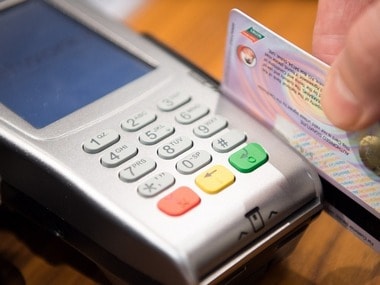Following demonetisation in November 2016, India took a huge step towards becoming a digital economy. But just over one year later, how is this transformation going? Let’s look at some numbers: In November 2017, the Reserve Bank of India (RBI) published data for mobile-based transactions of 127 banks. This means that out of 1500+ banks in India (including small co-operative banks), only 127 banks’ customers are doing mobile transactions while the remaining banks simply don’t offer customers a mobile-based payment system. In November 2017, only 200 banks had transactions through the NEFT (National Electronic Funds Transfer) route. Clearly net banking still has a way to go. The RBI bulletin indicates an overall increase in digital transactions (non-cash and cheque transactions) month on month around that period, which is encouraging. But interestingly 500 new ATMs were added in December 2017 alone across the country. More ATMs means more cash transactions. The penetration of smartphones in India was estimated at 30 crore (300 million) units by the end of 2017 with a population of 130 crores (1.3 billion). In 2017, the availability of the Internet in rural India was estimated at approximately 16 percent while it was 33 percent overall. These numbers tell us some important things about our progress towards a digital economy: While digital transactions increased month on month, nothing spectacular has happened since November 2016, other than the immediate spike. [caption id=“attachment_4295813” align=“alignleft” width=“380”]  Representational image. Picture courtesy: AP[/caption] Most banks, especially co-operative banks, are simply not technologically capable of providing a digital payment solution to customers. Particularly in rural areas, there is still a long way to go in access to smart phones and the Internet. Cash is still king – for better or for worse. Overcoming challenges What will it take for India to overcome these challenges? Let’s look at some of the scenarios for a number of constituents. For small P2P payments: As a customer using a mobile banking app I must open my mobile, open the mobile banking app with a password, select or enter the payee ID, enter the amount and then press ‘Pay’ button – a 4-5 step process against a two-step process of giving cash (take cash out of pocket and give!) My take: Let us accept that cash is convenient, especially for small payments, and not try to replace it. On the mobile side it’s believed that WhatsApp and BOT-based payment will make P2P payments easy. Overall, the use of social channels will become predominant in payments. Mobile payment apps may even become obsolete. Mobile payments: I have an account with a small cooperative bank and my bank simply doesn’t offer mobile payments. As a bank, I don’t have a core banking system which can easily integrate with the NPCI framework. My take: This is a huge problem. It’s not just about mobile apps, but about how they connect with a core banking system. An intermediate solution could be a centralized blockchain-based wallet hosted by say NPCI for all the small banks. This would help small banks’ customers ride the digital bandwagon. Internet access: I live in a rural area – Internet access is intermittent or not even available My take: This is a major infrastructure problem. A Bluetooth-based wallet, which can operate without Internet access, provides an intermediate solution. Money can be transferred using Bluetooth connection between nearby mobiles and sync will happen once both mobiles (not necessarily at the same time) come into Internet range. Security issues: I don’t feel secure with the whole idea of mobile-based banking. My take: This is not totally unwarranted. UPI does not need two-factor authentication in most cases. With certain merchants (mostly outside India), you are not required to enter a credit card PIN, which can be concerning. Giving authentication choices to customers can instil greater confidence. Having said that, the overall confidence is growing in mobile-based purchases in both urban and rural areas, but it takes time. End of the beginning The journey towards digital payments has only just begun and like anything else, people don’t change their behaviour overnight especially around something as central as making payments. When payment transactions are integrated into the payment experience, then it’s more likely to be a digital experience. For example, if I book Uber or Ola then payment through a wallet or card attached to the service provider is more compelling. But Cash on Delivery (CoD) for online purchases, which is a typically Indian phenomenon, is of course promoting the use of cash over a card. Old habits die hard. And last but not the least is the cost factor. If going digital means direct or indirect costs to the customer, then the initiative is simply not going to fly. (The writer is Senior Principal Consultant, Persistent Systems)
Out of 1500+ banks in India (including small co-operative banks), only 127 banks’ customers are doing mobile transactions while the remaining banks simply don’t offer customers a mobile-based payment system.
Advertisement
End of Article


)
)
)
)
)
)
)
)
)



